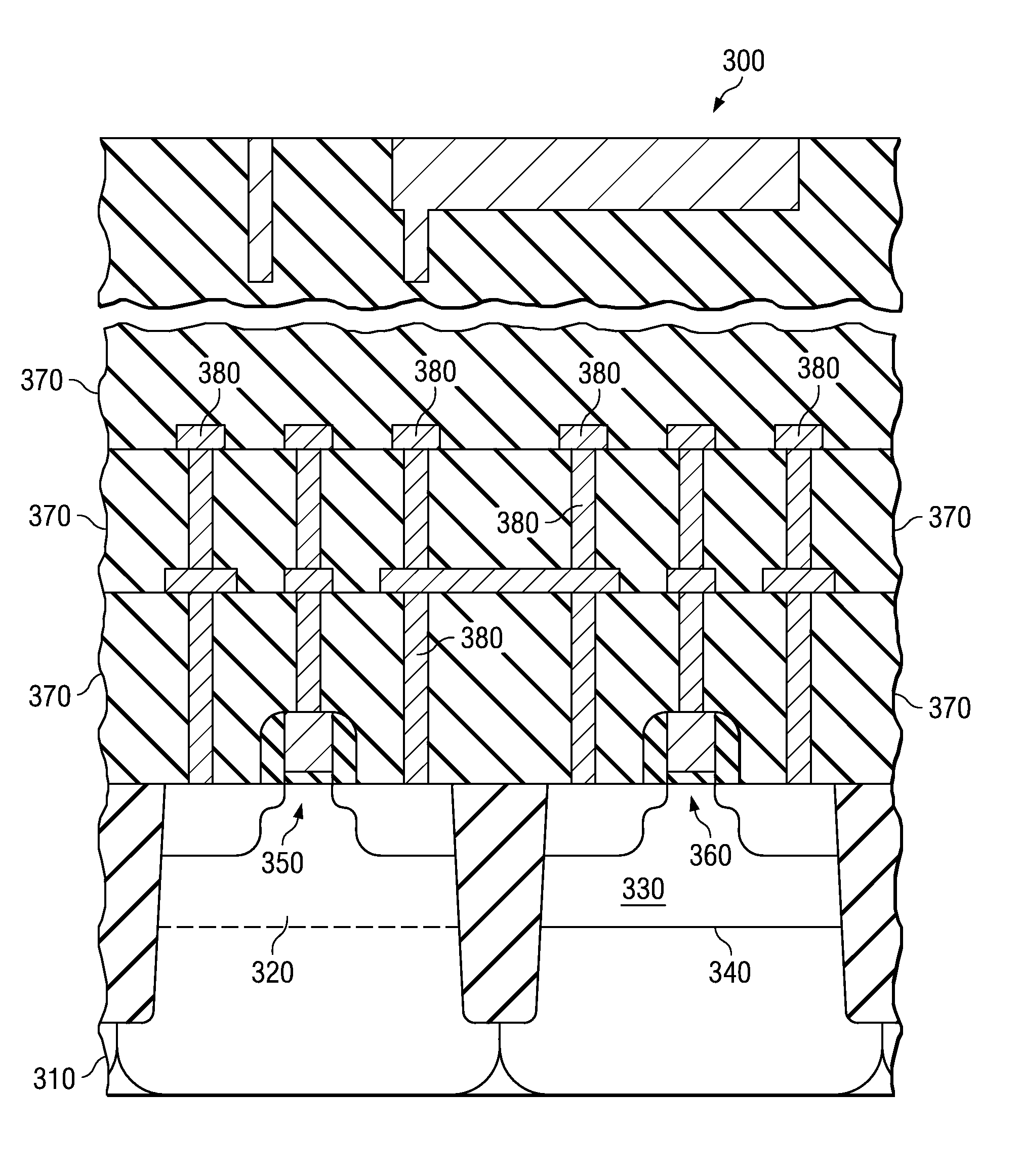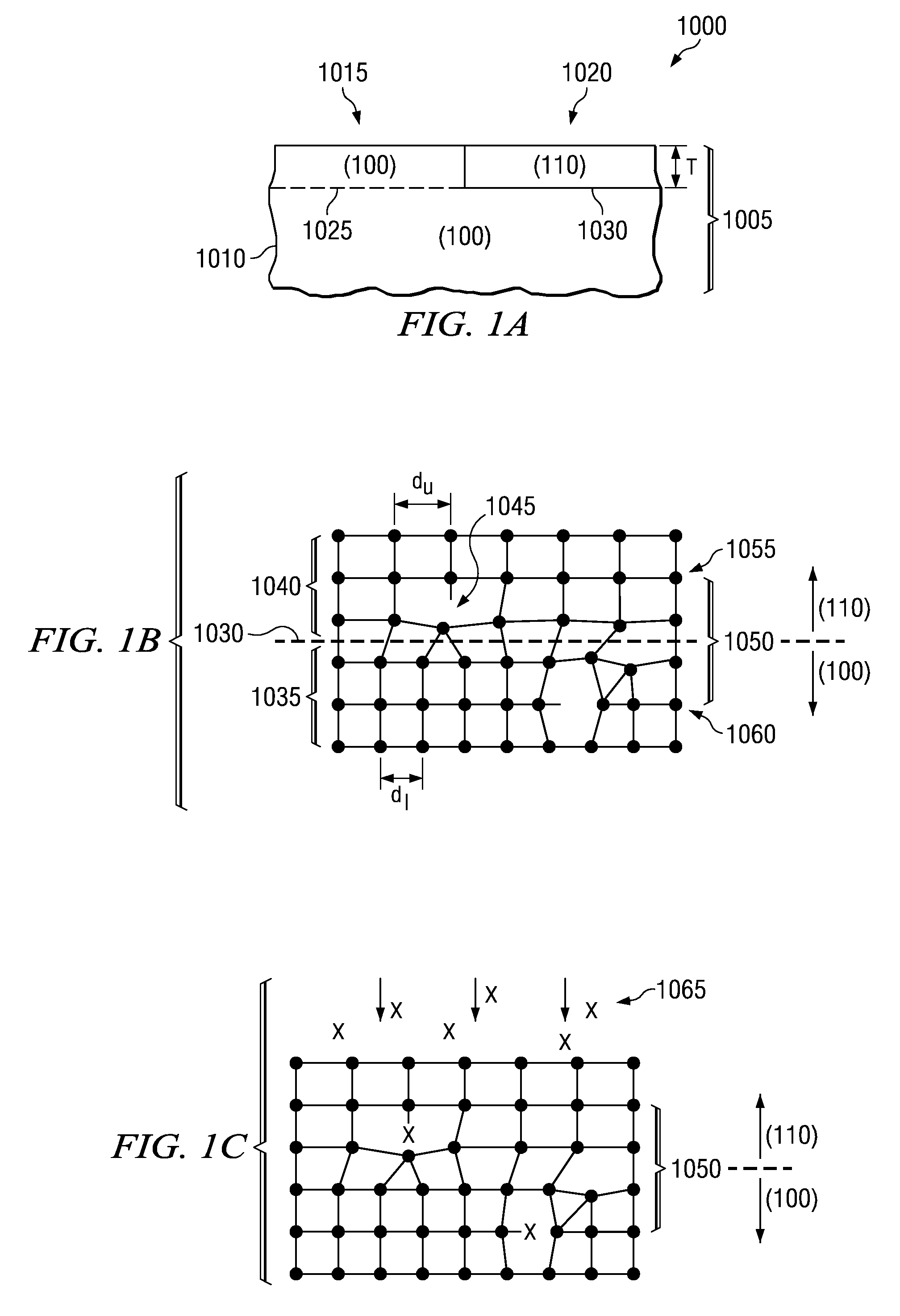Semiconductor Device Manufactured Using Passivation of Crystal Domain Interfaces in Hybrid Orientation Technology
a crystal domain interface and semiconductor technology, applied in the field of semiconductor devices, can solve the problems of physical limits of feature size, slow device performance increase rate, and device characteristics may be degraded
- Summary
- Abstract
- Description
- Claims
- Application Information
AI Technical Summary
Benefits of technology
Problems solved by technology
Method used
Image
Examples
Embodiment Construction
[0015]The invention recognizes that undesirable transistor characteristics associated with an interface between different crystal orientations of a hybrid-crystal orientation technology (HOT) substrate may be reduced by passivating unterminated bonds associated with lattice mismatch at the interface. Passivation may be accomplished, e.g., by implanting a passivating dopant that bonds to the unterminated bonds.
[0016]FIG. 1A illustrates a semiconductor device 1000 formed according to the invention. It is initially noted that, unless otherwise discussed, conventional processes and materials may be used to fabricate certain portions of the devices regarding the various embodiments discussed herein. The semiconductor device 1000 includes a HOT substrate 1005 that further includes a bulk portion 1010, an epitaxial portion 1015 and a hybrid portion 1020 with a thickness T. The epitaxial portion 1015 is substantially an extension of the lattice of the bulk portion 1010. Thus, the illustrate...
PUM
 Login to View More
Login to View More Abstract
Description
Claims
Application Information
 Login to View More
Login to View More - R&D
- Intellectual Property
- Life Sciences
- Materials
- Tech Scout
- Unparalleled Data Quality
- Higher Quality Content
- 60% Fewer Hallucinations
Browse by: Latest US Patents, China's latest patents, Technical Efficacy Thesaurus, Application Domain, Technology Topic, Popular Technical Reports.
© 2025 PatSnap. All rights reserved.Legal|Privacy policy|Modern Slavery Act Transparency Statement|Sitemap|About US| Contact US: help@patsnap.com



